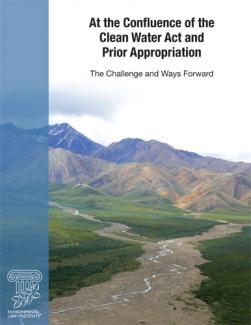Zika, Lead, Bad Water, and Why Sex Just Isn't So Fun Nowadays
Zika, lead, bad water quality, and why sex just isn’t so much fun nowadays.
Zika, lead, bad water quality, and why sex just isn’t so much fun nowadays.
Enhanced oil and gas recovery through hydrualic fracturing means more earthquakes.

The dangers of climate change are not usually couched in terms of national security, but awareness of the issue is growing rapidly. What could be more basic to security than a climate conducive for agriculture, abundant water supplies, ecosystem health, industrial production, biodiversity, and human comfort? What could be more threatening than extreme weather events or mass migrations because of rising seas and crop failures? The annual ELI-Miriam Hamilton Keare Policy Forum brought together top experts on the topic.
Tracy Mehan and a water revolution.
A new ELI guidebook puts a twist on water policy development. Focusing on what influences success, it lays out key factors that ultimately determine the success or failure of water initiatives in the Western United States.

This guidebook identifies common factors that influence the success of water policies or programs in the prior appropriation context, and provides examples of each factor to further clarify the issue. The guidebook is intended to help decision-makers at the state and local levels develop new policies and programs that are best tailored to navigate potential obstacles to achieving the desired outcomes.
Recently, increased emphasis has been placed on non-structural and nature-based hazard mitigation solutions, including the restoration of wetlands and floodplains, as cost-effective alternatives for flood hazard mitigation that also help achieve conservation goals like maintaining biodiversity. FEMA hazard mitigation grant programs could provide potential funding that could pay for the restoration and protection of critical natural infrastructure and improve outcomes and reduce costs from the next disaster.

This report (1) details the impact that water quantity law and practice has had on water quality, and likewise water quality rules on water quantity management; (2) analyzes the legal authorities of states and the federal government over water quantity and quality, respectively, and briefly recaps the current state of takings law relevant to appropriative rights and the Clean Water Act; and (3) identifies laws, policies, government structures, and other factors that can advance relationships between, and ultimately the outcomes for, water quality and quantity management.
(Washington, DC) — A new report by the Environmental Law Institute sheds light on the deep divide between surface water quality and quantity management in the American West and suggests ways to bridge that gap.